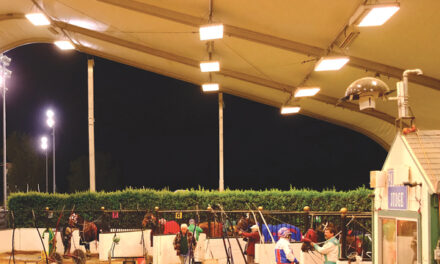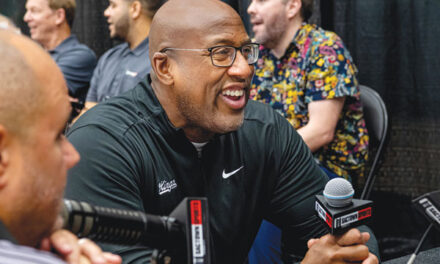I love Capitol Bowl. On dark nights, those white neon lights beckon with a nostalgic plea across West Capitol Avenue.
Inside, modern technologies honor and blur connections to 1960s bowling alleys, memories of beery scents, billowing ashtrays and Sure Strike scoring crayons.
Capitol Bowl calls itself a “modern bowling center.” This means glow bowling in disco darkness and automatic digital scorekeepers that erase the need for human calculations. The grill serves bacon cheeseburgers, chicken sandwiches and a thoughtful salad thick with tomatoes.

The bar, an essential bowling accessory, promotes happy hour with a rich pedigree of draft beers. Sad to report the bowling beer of my childhood—Burgermeister—no longer rolls.
Last summer, Capitol Bowl took its “modern bowling center” identity to another level. It became a string pinsetter house.
Management removed the traditional automated pin-setting machines—magical, mysterious, clanking contraptions that swept away fallen pins and somehow reloaded them in perfect sets.
In place of the old equipment, Capitol Bowl installed string pinsetters. The new gear turns bowling pins into puppets that dance on thin, black nylon cords. It’s bowling’s latest trend.
Strings mean pins no longer leap to laws of physics. They don’t truly fly across the lane to wipe out two or six or nine other pins. They almost replicate the old, ferocious pin action. But there’s a string attached.
Why would bowling alleys mess with the explosive soul of bowling? The answer is simple.
String pinsetters deliver a huge financial benefit to the house. String machines are uncomplicated, cheap to run and demand far less maintenance than traditional automatic pinsetters. Bowling alley energy bills drop by about 30% when strings arrive.
As for benefits to the bowler, the short answer is—it depends.
I haven’t heard any experienced bowlers say string pinsetters improve the game. The pins, old or new, are identical in weight and shape. Some bowlers are indifferent to the switch. They consider strings part of the game’s evolution.
Others hate strings and the theft of existential freedom they represent.
There’s another, more fundamental response that hovers above the thrill of the thunderous detonation that erupts when a bowling ball curves into the pocket and scatters 10 pins.
Here’s the fundamental answer. String pinsetters can save a bowling alley from a slow death. That’s good news for anyone who loves Capitol Bowl and the eight other centers around town.
Bowling’s glory days, when Dick Weber and Earl Anthony were household sporting names, are long gone. It takes skill, patience and practice to become a decent league bowler. The game is too slow and difficult for many young people. Too analog.
In the last decade, more than 600 U.S. bowling alleys closed. New centers are rare, especially in cities where land, zoning and parking requirements make it hard to attract investors.
Traditional pinsetter machines are so complex that bowling alleys hire full-time mechanics to make things work. Old pinsetters run on conveyor belts, elevators, gears, sprockets, gaskets, levers and chains—moving parts that need oil, wear out and breakdown.
String pinsetters are simple. They move up and down. They use pulleys to align and set pins. Tangled cords are rare. Employees easily learn to shut off the machine and unknot pins.
The biggest maintenance problem is remembering to rotate the pins every day or two. The No. 1 pin takes a bashing. No mechanical skill is required to make the switch.
String bowling alleys are defensive. When I asked around Capitol Bowl how strings were progressing, an employee didn’t really answer. He responded by telling me about the certification process that validated the string setup for league and tournament play.
Certification means experts find no statistical difference among bowling scores after an alley converts to strings.
I’m no expert, but I think the validators miss something. Watching right-handed string bowlers at Capitol Bowl, I swear they benefit from the No. 10 pin getting toppled by a whipsawed nylon cord.
Or maybe I’m wrong. String theory requires additional study. Another beer, please.
R.E. Graswich can be reached at regraswich@icloud.com. Follow us on Facebook and Instagram: @insidesacramento.















